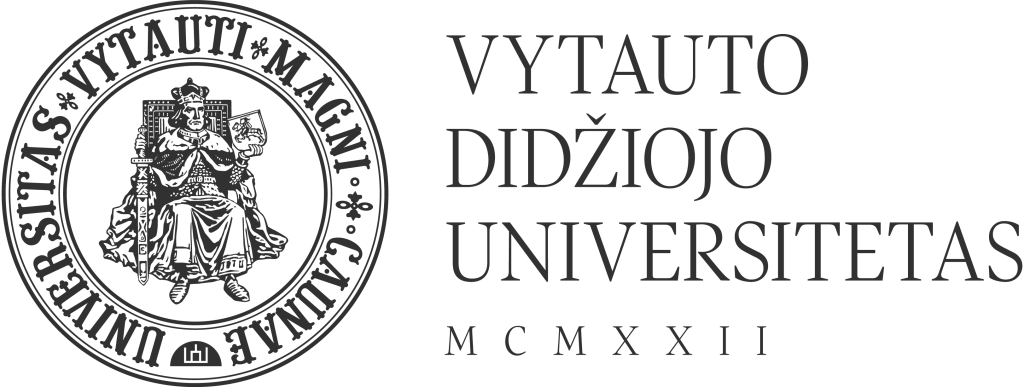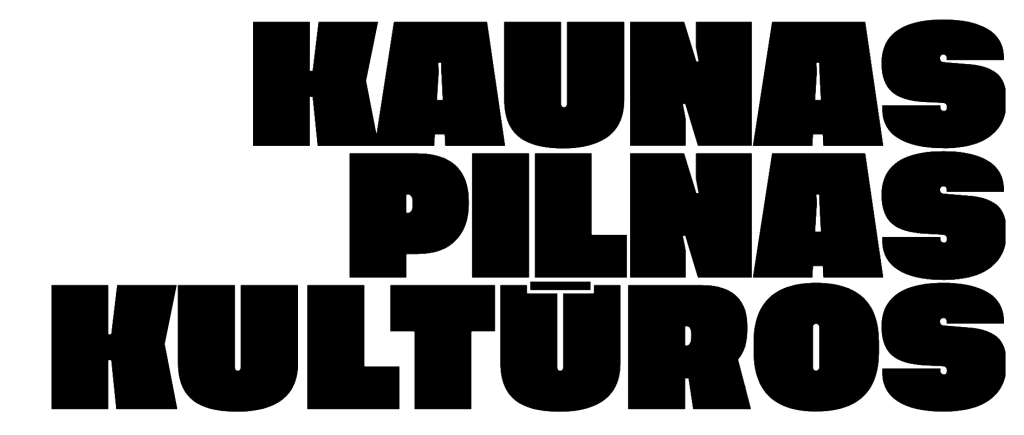Kauno miesto muziejaus istorija
Kauno miesto muziejaus istorijos pradžia – 1882 metai, kai Kaune pradėta statyti pirmaklasė tvirtovė. Tuomet, kasant tranšėjas fortams, su kitais ekspertais dirbęs inžinierius E. I. Golyškinas pastebėjo įdomių paleontologijos pavyzdžių ir pradėjo juos rinkti. Surinkęs nemažą radinių kolekciją (apie 1 000 vienetų) bei pasitaręs su Peterburgo imperatoriškąja archeologijos komisija, nutarė ją perduoti Kauno miesto valdybai. Kolekcijos perduotos 1897 m. liepos 30 d. Jų pagrindu buvo pradėtas kurti miesto muziejus, kuriam paskirta patalpa miesto rotušėje.

Konstantinas Gukovskis – pirmasias muziejaus vadovas
Į muziejų pateko Kauno apylinkių floros botanikos rinkinys, sudarytas vokiečių konsulo Kaune, barono von Mollendorfo. Netrukus muziejų praturtino prelatas Jonas Radavičius, padovanojęs 800 monetų numizmatikos kolekciją, įvairių mineralų, rūdų, žemės gelmėse suakmenėjusių gyvūnų rinkinį. Pirmuoju muziejaus vedėju buvo gubernijos statistikos komiteto narys, Kauno mergaičių gimnazijos istorijos mokytojas Konstantinas Gukovskis, domėjęsis Lietuvos praeitimi, liaudies menu ir kalba. Visus muziejaus reikalus tvarkė miesto valdybos sudaryta speciali komisija, kuri stengėsi sukaupti kuo daugiau eksponatų. 1898 m. balandžio 15 d. ji nutarė kreiptis į Imperatoriškąją archeologijos komisiją Peterburge ir kitas mokslo, meno įstaigas bei dailės mokyklas ir privačius asmenis, prašydama steigiamam muziejui eksponatų. Peterburgo imperatoriškoji archeologijos komisija „malonėjo suteikti… vieną geležinį kirvį, vieną geležinį ieties antgalį, vieną akmens kirvelį ir 10 gabalų bronzinių apyrankių, kaklo grandinių“. Meno akademija ir kitos dailės mokslo įstaigos pareiškė, kad jos atsiųsiančios muziejui eksponatų, bet tik tada, kai bus sudarytas steigiamojo muziejaus statutas-įstatai.
Muziejui buvo renkama įvairiausia medžiaga, bet kadangi buvo norima muziejų pavadinti Kauno miesto muziejumi, jame turėjo būti kaupiama medžiaga, atspindinti tik miesto prekybą, amatus, miestiečių kultūrą, buitį.
1898 m. lapkričio 25 d. miesto Valdyba nutarė paruošti muziejaus statutą ir šalia rotušės buvusio pašto pastate paskyrė patalpas, kuriose muziejus įsikūrė 1907 m. ir veikė iki 1936 m.
Muziejui buvo renkama įvairiausia medžiaga, bet kadangi buvo norima muziejų pavadinti Kauno miesto muziejumi, jame turėjo būti kaupiama medžiaga, atspindinti tik miesto prekybą, amatus, miestiečių kultūrą, buitį.
1898 m. lapkričio 25 d. miesto Valdyba nutarė paruošti muziejaus statutą ir šalia rotušės buvusio pašto pastate paskyrė patalpas, kuriose muziejus įsikūrė 1907 m. ir veikė iki 1936 m.

Kauno arklių pašto stoties pastatų kompleksas, kuriame veikė Kauno miesto muziejus

Antrasis muziejaus vadovas Tadas Daugirdas
Statutas patvirtintas tik 1905 m. lapkričio 5 d., o muziejus pavadintas „Kauno miesto moksliškai-pramoniniu muziejumi“. 1906 m. mirus vedėjui K. Gukovskiui, muziejus liko be vadovo. Tuo metu bendradarbiauti tvarkant muziejų pasisiūlė archeologas, dailininkas Tadas Daugirdas. 1907 m. vasario 8 d. jis buvo paskirtas muziejaus prižiūrėtoju ir konservatoriumi.
T. Daugirdas energingai pradėjo tvarkyti muziejaus reikalus. Per spaudą kreipėsi į visuomenę, prašydamas muziejui eksponatų, supažindino visuomenę su muziejaus veikla. Muziejaus eksponatus jis konservavo, klasifikavo, prisagstė prie 103 lentelių, kiekvieną aprašė, šalia lentelių pridėjo piešinius ar nuotraukas. Muziejaus komisijai talkininkaujant, muziejaus vaidmuo mieste augo. Suprasdami jo svarbą, Kauno fabrikantai Tilmansas, Šmidtas ir Rekošas padovanojo muziejui savo fabrikų produkcijos pavyzdžių.
Daugirdas, dirbdamas muziejuje daugiau kaip dešimt metų, ne tik sutvarkė jame buvusius eksponatus, bet ir prijungė savo sukauptas kolekcijas. Be archeologijos, paleontologijos, etnografijos, fabrikų ir namų pramonės (amatų) ekspozicijos skyrių, muziejuje buvo įrengti numizmatikos, filatelijos, Vakarų Europos dailės skyriai. Stengdamasis kuo geriau sutvarkyti muziejų, T. Daugirdas studijavo muziejinę literatūrą, lankėsi geriausiuose Rusijos imperijos ir užsienio muziejuose, o 1914 m. balandžio mėn. dalyvavo Lenkijos muziejininkų suvažiavime, kuriame dalyvius supažindino su Kauno miesto muziejumi.
1915 m. kaizerinei Vokietijai okupavus miestą, intensyvus muziejaus darbas kuriam laikui sutriko, tačiau T. Daugirdas stengėsi, kad eksponatai nebūtų išgrobstyti ir išvežti į Vokietiją. T. Daugirdui teko artimai bendradarbiauti su vokiečiais – jis buvo vokiečių burmistro padėjėjas, bendradarbiavo ir laikraščiuose, rašydamas apie Kauno bombardavimą, apie Kauno pilį, lietuvių papročius ir pan. Vokiečiai ne kartą rašė apie T. Daugirdo globojamą muziejų, apie patį konservatorių, neužmiršdami Kauno praeities: „Muziejus atidarytas lankytojams kiekvieno sekmadienio rytą. Jo aplankymas, giliai išmokslinto vedėjo vadovybėje, yra tikras malonumas. Bronzos radinių rinkinys labai įdomus, ypatingai gi įdomi lietuvių kultūrai ir tautodailei skirta muziejaus dalis, nes ji padės vokiečiui lankytojui suprasti tos inteligentiškos ir darbščios tautos gyvenimą. Ponas Daugirdas, atidavęs visą savo veiklumą šiems rinkiniams, pelnė savo tautai didžius nuopelnus“, – rašė „Kownoer Zeitung“, 1916 m. sausio 19 d. Profesorius Bork, tuo metu vokiečių leitenantas, 1915 m. lapkričio mėn. rašytame laiške žurnalui „Mannus“ apie muziejų rašė: „Čia Kaune radau mažą muziejų, kurio vertė glūdi ypač jo priešistorinėje ir kraštotyrinėje dalyje. Gaudamas juokingai mažą valstybinę pašalpą, to muziejaus vedėjas sugebėjo pažymėtinu būdu surinkti tai, kas šiandien užtinkama, o taip pat ir išgelbėti praeities paminklus…“. Straipsnis buvo išspausdintas 1918 m. T. Daugirdas muziejumi rūpinosi iki mirties 1919 m.
1920 m. sausio 23 d. muziejaus direktoriumi paskirtas prof. Eduardas Volteris, vadovavęs iki 1936 m. Naujasis direktorius su muziejaus komisija ne tik tęsė T. Daugirdo pradėtą darbą, bet ir suintensyvino eksponatų konservavimo ir restauravimo darbus, buvo įsteigtas naujas Kauno miesto kultūros skyrius. Muziejaus ekspozicija ir fondai Lietuvos universiteto studentams kurį laiką buvo mokymo laboratorija, o mokytojai eksponatais naudojosi kaip vaizdinėmis priemonėmis.
Gausėjant eksponatams, muziejaus patalpos pasidarė ankštos ir jose įrengti didesnę ekspoziciją tapo neįmanoma. Neturėdama kitos išeities, mažiau muziejaus pobūdį atitinkančius eksponatus vadovybė stengėsi perduoti kitiems muziejams. 1936 m., įsteigus Kultūros muziejų, Miesto muziejus buvo likviduotas, eksponatai išskirstyti.
Kauno miesto muziejus atkurtas Kauno miesto tarybos 2005 m. spalio 20 d. sprendimu Nr. T-535, kaip savivaldybės biudžetinė įstaiga. Lankytojams duris muziejus atvėrė 2008 m. vasario 15 d., pristatydamas ekspoziciją „Kaunas laiko ženkluose: nuo ištakų iki 1940 metų“, skirtą Kauno savivaldos 600-osioms metinėms. Šiandien atkurtasis Kauno miesto muziejus, tęsdamas savo pirmtakų darbus, verčia naują istorijos puslapį.


